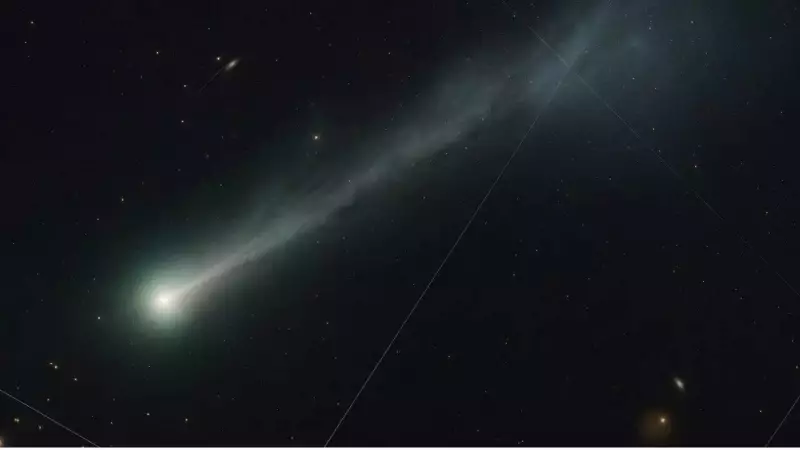
In a monumental discovery that has electrified the global astronomy community, a mysterious comet identified as 3I/ATLAS (C/2025 N1) has been confirmed as only the third known interstellar object to visit our Solar System. This celestial wanderer, officially detected in July 2025, promises to unlock secrets about how planets form around distant stars.
The Journey of an Interstellar Wanderer
The comet was first spotted by the Asteroid Terrestrial-impact Last Alert System (ATLAS) telescope located in Chile. Following its initial detection, scientists delved into archival data and successfully traced earlier images of the object back to June 2025, which confirmed its extraordinary and unbound path through space.
Data from NASA and the Minor Planet Center reveals that 3I/ATLAS is travelling on a hyperbolic trajectory. This specific path means the comet is not gravitationally tied to our Sun and is merely passing through, destined to exit our Solar System forever. It is moving at a staggering speed of approximately 60 kilometers per second (216,000 km/h), a velocity typical for an interstellar visitor.
The comet's voyage will see it make its closest approach to the Sun, known as perihelion, in late October 2025. Its most intimate encounter with Earth is projected for around mid-December 2025, when it will pass at a safe distance of roughly 1.6 to 1.8 astronomical units (about 240 million kilometers). NASA has categorically stated that 3I/ATLAS poses no threat to our planet.
Unprecedented Views and Viral Claims
In recent weeks, the astronomy world and social media have been abuzz with claims of "8K visuals" of the interstellar comet. While these are not official releases from space agencies like NASA or ESA, they are not entirely without merit. Skilled astrophotographers and observatories have utilized advanced techniques to create remarkably detailed composite images.
These methods involve stacking dozens of shorter exposures, aligning them precisely on the comet's fast-moving nucleus, and correcting for atmospheric distortion. The result is a series of sharp, colour-balanced portraits that provide an exceptionally clear, ground-based look at the comet's coma and its developing tail. Although the "8K" label is more of a marketing term, the images themselves represent a significant achievement in observational astronomy.
Scientific Significance and Cosmic Secrets
The detailed analysis of these new images has already begun to yield fascinating insights. Researchers have observed a bright, condensed coma enveloping the comet's core and a tail stretching millions of kilometres into the void. More intriguingly, subtle jet-like patterns have been detected near the nucleus.
These jets are created when sunlight heats different patches on the comet's surface, causing trapped gases and dust to erupt into space. By studying the composition of these outgassing jets, scientists can decipher the types of ices locked within 3I/ATLAS. This data is crucial for comparing it with comets native to our Solar System, helping to determine if this visitor formed under similar conditions or in a completely different chemical environment in another star system.
As with the previous interstellar visitor 'Oumuamua, some viral speculation has emerged, suggesting 3I/ATLAS could be an artificial object or be "hiding secrets." However, the scientific community has firmly dismissed these claims. NASA and the International Astronomical Union classify 3I/ATLAS as a natural comet, and no credible evidence, such as unusual radio signals or accelerations, suggests otherwise.
The true significance of 3I/ATLAS lies in its origin. It is a pristine, icy messenger from another star, carrying the frozen fingerprints of chemistry from an alien planetary system. By observing how it brightens, what gases it emits, and how its dust behaves as it nears the Sun, researchers hope to expand our understanding of planetary formation across the galaxy. This fleeting visit offers a once-in-a-generation opportunity to study material that was forged around another star, perhaps billions of years ago, before it disappears back into the depths of interstellar space.





